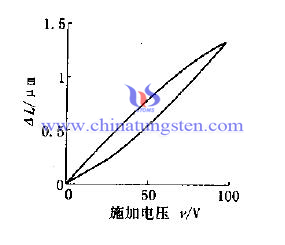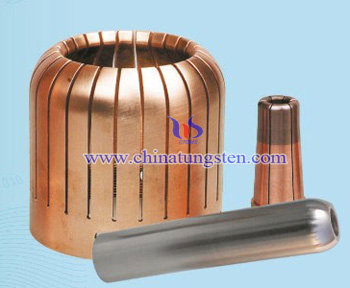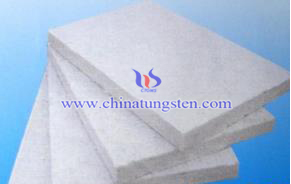Maintenance of Carbon Sulfur Analyzer
- Details
- Category: Tungsten Information
- Published on Tuesday, 19 April 2016 16:03
- Written by xuejiao
- Hits: 232
While analyzing for the carbon and sulfur of steel materials, most of users would choose carbon sulfur analyzer. It is the most commonly instruments for analyzing the carbon and sulfur. Carbon sulfur analyzer is also adopted for some reliability tests of industrial products. In addition, the tungsten granule is an indispensable flux for carbon sulfur analyzer. The fluxing effects of tungsten granule can improve the accuracy of measurement results of carbon sulfur analyzer. However, due to long hours of working, carbon sulfur analyzer will accumulate a lot of sediment, which will reduce the stability of the measurement results. Therefore, the users should always check the work state of carbon and sulfur analyzer, and repair analyzer regularly or make maintenance daily.
The followings are some details about the maintenance for carbon sulfur analyzer. 1. Clean dust in electric arc furnace and clean carefully the inside of the furnace body and precipitator every day. If find that there exist a breakage of dust paper, users should exchange it a new one immediately. Remember not to use any paper napkins or other papers. 2. Two electrodes in the measuring cylinder and buret cannot be contact with each other in any cases, otherwise the process of carbon sulfur analyzer would not function properly. 3. The rubber stopper of buret must be open a notch to make sure that the titration solution can be added. 4. The function of silicone oil in the sensor is to prevent the sensor from corroding. 5. Carbon and sulfur analyzer should be placed on a stable and dry place. 6. Remember to close the master valve of oxygen and the power of instrument if you don’t need to use the analyzer any more in a day. If analyzer has time to rest, on the one hand, it can extend the life time of carbon sulfur analyzer. On the other hand, it benefits to save energy and protect the environment. 7. As the most commonly flux, the quality of tungsten flux should be strictly checked in order to avoid some unnecessary problems during the analysis. 8. Clear up the residue of tungsten granule which do not react completely.

| Tungsten Metals Supplier: Chinatungsten Online www.tungsten.com.cn | Tel.: 86 592 5129696; Fax: 86 592 5129797;Email:sales@chinatungsten.com |
| Tungsten News & Prices, 3G Version: http://3g.chinatungsten.com | Molybdenum News & Molybdenum Price: http://news.molybdenum.com.cn |
Effect of Doping on Tungsten Copper Contacts (2/2)
- Details
- Category: Tungsten Information
- Published on Tuesday, 19 April 2016 15:18
- Written by xiaobin
- Hits: 256
Take W80-Cu20 tungsten copper contact as an example, were added 0.3% B, 2.0% Nb, 1.5% Ce, using high-speed photography to capture the arc without tungsten copper contact materials under high voltage and high-current interaction, and arc extinguishing process and calculation of the various stages of the amount of time, while taking advantage of the closure value oscilloscope recording discharging. It can be found that the arcing time of tungsten copper contacts added B and Nb is 1.5 times longer than the original contacts.
n addition, in the stable combustion, undoped tungsten copper contact has smaller arc root and the smallest volume of plasma cloud, which shows that higher density of arc plasma cloud increases the temperature of ionsphere; by comparison, doped tungsten copper contact has wider arc root, larger area of scatter and electron movements, which indicates the doping elements can play a role to split the arc. In summary, doped tungsten copper contact has longer arcing time, smaller chopping value, which can effectively disperse the arc and energy.
Next is anti-arc erosion test, which carried out under an inert gas welding, plasma cutting, select the same operating voltage and current, at regular intervals to contact the ablation mass loss were weighed, and observed by scanning electron microscopy of the surface morphology after ablation. By analyzing the experiment data, undoped tungsten copper contact has the maximum of ablation, the doping amount of contact the ablation of a certain percentage of the different constituent elements are significantly reduced. This is due to electrical breakdown occurs in the Cu-rich region, the arc aggregation and localized melting in the region and causing splashing liquid copper in undoped contacts; And after the addition of Nb and B to improve the distribution of the statue, so that small and uniform distribution of the copper phase in the process of arc arcing does not occur in the Cu-rich region, but evenly distributed over the surface, so as to effectively prevent the arc energy centralized, local ablation lead to failure of the contact material.
| Tungsten Copper Supplier: Chinatungsten Online tungsten-copper.com | Tel.: 86 592 5129696; Fax: 86 592 5129797;Email:sales@chinatungsten.com |
| Tungsten News & Prices, 3G Version: http://3g.chinatungsten.com | Molybdenum News & Molybdenum Price: http://news.molybdenum.com.cn |
Tungsten Bronze and Avoid Hysteresis Driving Method
- Details
- Category: Tungsten Information
- Published on Monday, 18 April 2016 18:29
- Written by xinyi
- Hits: 265

| Tungsten Oxide Supplier: Chinatungsten Online www.tungsten-oxide.com | Tel.: 86 592 5129696; Fax: 86 592 5129797;Email:sales@chinatungsten.com |
| Tungsten News & Prices, 3G Version: http://3g.chinatungsten.com | Molybdenum News & Molybdenum Price: http://news.molybdenum.com.cn |
Effect of Doping on Tungsten Copper Contacts (1/2)
- Details
- Category: Tungsten Information
- Published on Tuesday, 19 April 2016 15:17
- Written by xiaobin
- Hits: 237
Tungsten copper contact is key part of some high-pressure, high-load breaker, which plays a significant role in current connecting and diverting. Its stability directly affects electrical service life and reliability of the overall operation. And tungsten copper is a kind of composite material that is composed of uniform distribution, neither form solution nor form composite compound W and Cu phase, which not only has high density, high melting point, high strength and excellent anti-arc erosion, anti-welding of W, but also has excellent thermal and electrical conductivity, plasticity, easy processing advantages of Cu.
But the biggest advantage of tungsten copper materials is a special kind of sweating heat sink material. At a high arc temperature, Cu can absorb a lot of energy of arc evaporation and effectively decrease the arc temperature to improve conditions and reduce the effect of galvanic action. With the rapid development of grid market, gradually toward the high-voltage switchgear high-voltage, large capacity, small direction, while the corresponding circuit breaker capacity will continue to increase, the interrupter space narrowing, which makes contact on a unit area bear the load increases, the performance of tungsten copper contact materials have higher requirements.

| Tungsten Copper Supplier: Chinatungsten Online tungsten-copper.com | Tel.: 86 592 5129696; Fax: 86 592 5129797;Email:sales@chinatungsten.com |
| Tungsten News & Prices, 3G Version: http://3g.chinatungsten.com | Molybdenum News & Molybdenum Price: http://news.molybdenum.com.cn |
TiO2-Aluminosilicate Fiber Paper Composite Carrier Tungsten Trioxide Denitration Catalyst
- Details
- Category: Tungsten Information
- Published on Monday, 18 April 2016 17:18
- Written by chunyan
- Hits: 235
 Currently, the most widely used SCR denitration catalyst is the vanadium pentoxide-tungsten trioxide-titanium dioxide base monolithic denitration catalyst, wherein the carrier is titanium oxide; the main active component is vanadium pentoxide; tungsten trioxide plays the roles of enhancing the acidity, expanding SCR denitration reaction temperature window, inhibiting anatase transfer into rutile, reducing the conversion of sulfur dioxide to sulfur trioxide, improving the ability of anti-poisoning of the catalyst.
Currently, the most widely used SCR denitration catalyst is the vanadium pentoxide-tungsten trioxide-titanium dioxide base monolithic denitration catalyst, wherein the carrier is titanium oxide; the main active component is vanadium pentoxide; tungsten trioxide plays the roles of enhancing the acidity, expanding SCR denitration reaction temperature window, inhibiting anatase transfer into rutile, reducing the conversion of sulfur dioxide to sulfur trioxide, improving the ability of anti-poisoning of the catalyst.| Tungsten Oxide Supplier: Chinatungsten Online www.tungsten-oxide.com | Tel.: 86 592 5129696; Fax: 86 592 5129797;Email:sales@chinatungsten.com |
| Tungsten News & Prices, 3G Version: http://3g.chinatungsten.com | Molybdenum News & Molybdenum Price: http://news.molybdenum.com.cn |





 sales@chinatungsten.com
sales@chinatungsten.com